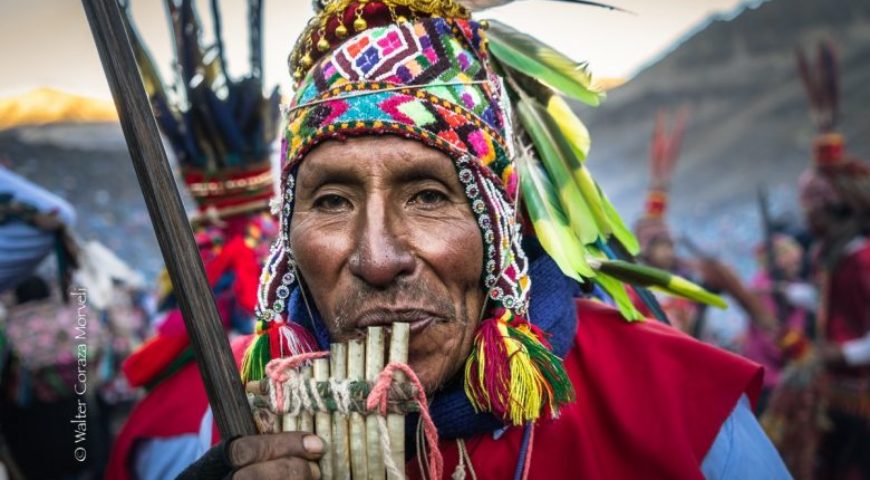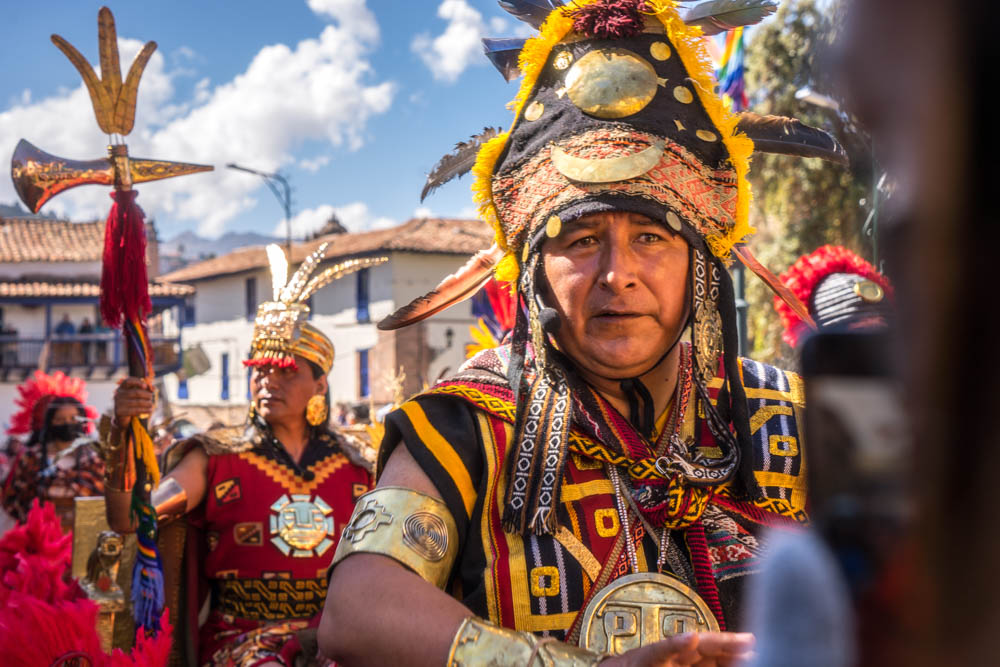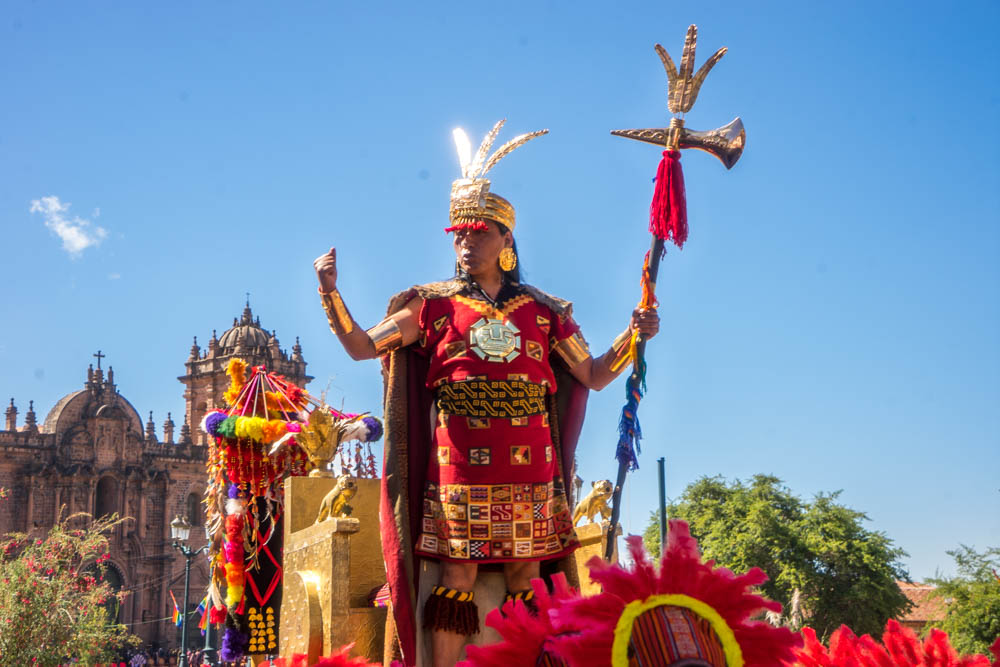
The Incas And The Shamans
The Peruvian Shamans coming from Inca Times has more to say in these times of changes
The Inca Culture or Tahuantinsuyo was one of the most important pre-Columbian cultures in America and the most important in South America. Just like the Mayans in Mexico, a sophisticated culture developed in Peru with many technological advances for its time.
According to the chronicler Garcilazo de la Vega, the Incas practiced pantheism, and also, in regard to sacralizing stones, mountains, waterfalls or caves, as hylozoism. For the Incas, sacred things, of whatever nature, were called huacas, or wacas, or guacas. Pantheism is a characteristic that is found in all the continents inhabited by man, and it defines in part the ancestral spirituality of the human being. Seeing the sacred in animals, minerals, plants, mountains, lakes, is a practice that we find everywhere, both in ancient civilizations such as Egyptian, Chinese or Hindu, as well as in most ethnic groups and cultures throughout the world. planet, from the Maori to the Eskimos.

We will see how other characteristics of archaic, planetary spirituality are repeated and amplified in the spiritual culture of the Incas: shamanism, mediums, communication with deceased ancestors, the sacralization of dreams, the interpretation of omens, ecstasies outside. of the body, the dialogue with plants, reincarnation, animal or mineral metamorphoses, all these facets were also and continue to be, to some extent, part of the Inca spiritual culture.
On the other hand, Inca spirituality was present in oracles or people with a lot of supernatural Power, El Umu, priest-soothsayer, superior to Wih’sa had two specializations, the Rikux who inspected the sacrifices and the Willax (Uillac or Villac) who were talking to the Wakas. In general, they received the denomination of Wakapwil’as (Uacabvillac) or Wakawan rimax (Wakarimatsi or Guacarimachic), the one that makes the Wakas speak, being very scarce in relation to the Rikux. Those of greatest distinction were the PunchaupaWillac (the one who speaks with the sun), the LibiacpaWillac (who speaks with the ray) and the MalkipWillac (who speaks with the ancestors) ”. The Incas also had hermit monks, as there have always been in every inhabited continent, “the Guacaues, medical philosophers who wandered naked through the isolated and deserted places of the earth, living in complete solitude, dedicated to the studies of the transcendent mysteries of the world. The Chronoclers Guaman Poma and Arriaga mention them as very effective old people who lived isolated in the deserts, leading a life of total seclusion, naked, exposed to extreme temperatures, enduring long fasts and expressly dedicating themselves to meditating on the mysteries of creation. The technique used was to observe the solar disk all day without blinking, since it was there that they could read the great secrets of humanity.
The specialization of sorcerers, healers and priests was evident, there were for example the Camascas, healers inspired by lightning or thunder, with a double characterization, those who healed with herbs and fortune-tellers, who answered what was asked of them. . The Soncoyoc or inspired who healed heart or soul, received inspiration during sleep, whether induced or natural. They acquired their knowledge by birth or by supernatural methods such as lightning and perfected it with the transmission of adequate knowledge imparted by members of their family or by the priestly caste … The Muscoc or dreamers interpreted dreams, determining the prognosis of the disease. Once the consultation was carried out, they requested a garment from the patient, on which they slept in the sanctuary and through the interpretation of the dream they made the diagnosis. Even today this type of fortune teller-healer is found in Peru and Bolivia, who uses alcoholic beverages for trance, prepared with coca and other fermented herbs … The sorcerers-confessors, who resided in Xalca or Janca, were called Alcos. (White), cold mountains, acting as intermediaries between local and personal gods and men, receiving the answer in cryptic language, thus diagnosing diseases. Other lesser priests, the Cuyricuc or Hacaricuc used for their cuy a guinea pig, a wild rodent – known as the rabbit of the Indies – with which they rubbed the affected parts of the patient to then proceed to the ritual sacrifice, interpreting in their viscera or the movement of their blood the affection, and by similarity they diagnosed the ailment that afflicted the patient, in the belief that it was withdrawn and transferred magically to the animal.

The Pachacuc or Pacharicuc used a similar system, replacing the guinea pig with a large spider. The Ayatapuc were in charge of speaking directly with the dead and the Hechecoc guessed the disease after ingesting quantities of tobacco and coca. Others like the Caviacoc used alcoholic beverages to enter a trance and thus proceed to the diagnosis. The Hachus or Socyac did it by means of magical passes over corn grains and animal excrements, like the Achicoc, who performed spells with corn and animal manure. The Virapiricos obtained their magical inspiration from the study of the smoke that the burning of llama fat gives off and the Calcapiry or Calparicuc (Callparicul), made their diagnosis by culpa, that is, by looking inside the recently slaughtered animals interpreting through its entrails or its roasts. The Llullallaica Umu based its inspiration on the observation of fire; and as a priest, he presided over the ceremonies dedicated to the sun, the moon, and the stars.
Waldemar Espinoza, the historian of the Incas, tells us that “in each ayllu, there was at least one hampicamayoc (or healer/doctor/medicine Man) who knew magic manipulations and medicinal herbs, animals, and minerals for the different diseases that they also knew how to diagnose.” There were also healers of great reputation, who were sometimes requested from distant ayllus, for example, the “callaguayas” (or kallahuayas) of Collasuyo (land of the wise). “The curandería and/or medicine was practiced by people of both sexes, but not by people of all social classes,”
We should also mention the temporary transmigrations of Peru Shamans in a trance state that for a few hours took animal forms. “There were shamans who claimed to have powers to turn into animals. And in truth the versions that they referred were not entirely imaginary, since such characters knew and ingested a series of datura or hallucinogens (coca, tobacco, chamico, san pedro cactus, floripondio, ayahuasca, etc.) that made them sleep and put on in a trance, where they saw and did fantastic things that later they told as if they had really happened, facts that no listener doubted “
From all this, today we have the legacy of the Qeros, a high Andean community that still preserves all this knowledge based on its Altomesayoqs, Pampamesayoqs, and Paqos teachers who support the earth and work with the energy of different entities to be able to heal, predict, and find our spiritual path.
Pictures Belongs to Walter Coraza
